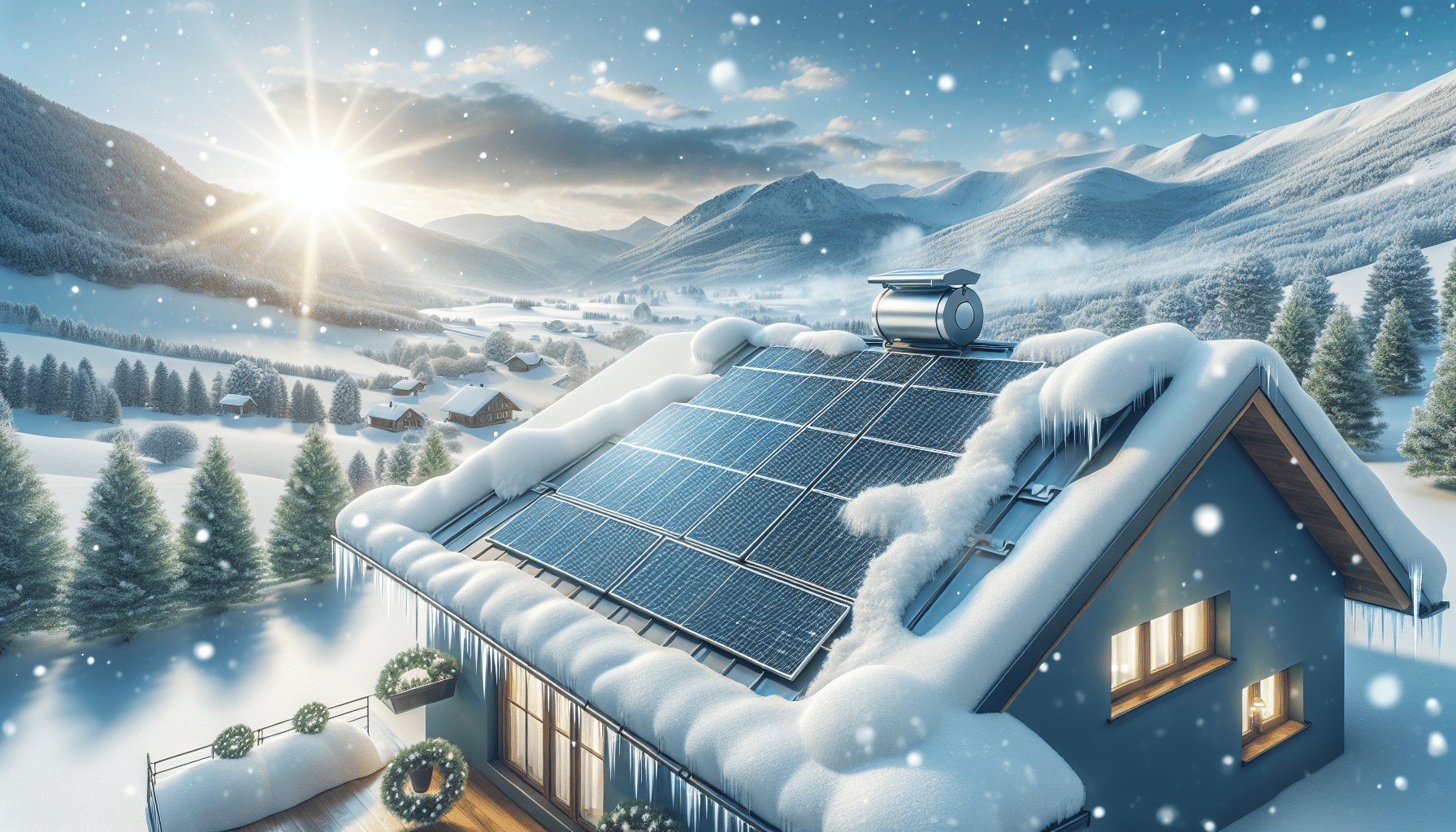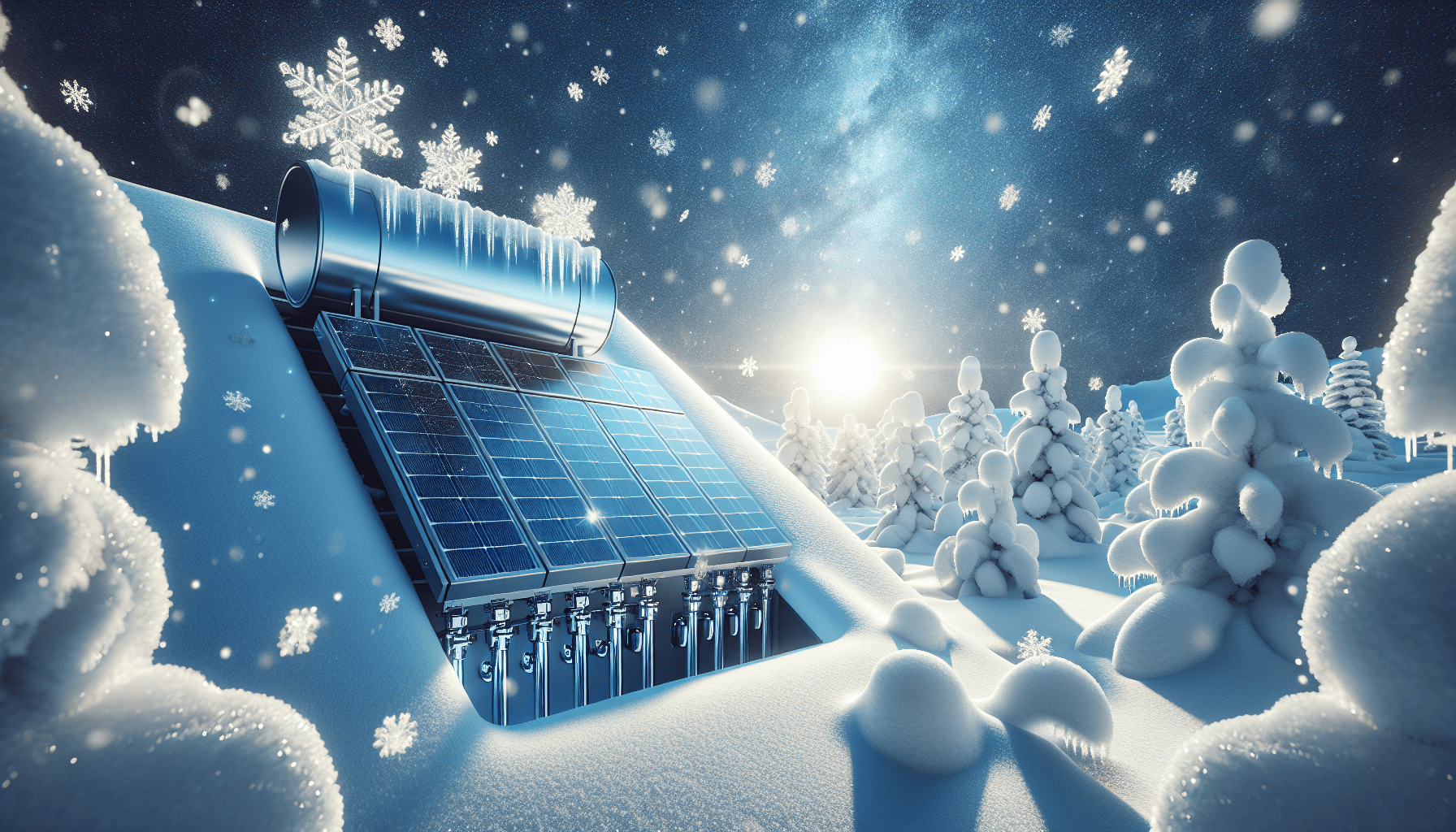Can you imagine waking up to a brisk morning in a snowy landscape, only to step into a warm shower powered entirely by the sun? It’s a tantalizing thought, isn’t it? Solar water heaters are often associated with sun-soaked locations, where clear skies and beaming sunlight perpetually shine. But what about those of us living in colder climates? Can solar water heaters still deliver comfort and efficiency when the temperatures drop? Let’s find out if warmth can successfully coexist with frost.

Understanding Solar Water Heaters
Solar water heaters, or solar thermal systems, harness the sun’s energy to heat water, making them a popular choice for achieving energy efficiency. They consist primarily of solar collectors, a storage tank, and a circulation system. While they thrive in sunny areas, their performance isn’t limited to warm regions alone. Exploring how these systems work in colder climates can help you determine if they’re a good fit for your needs.
The Basics of How Solar Water Heaters Work
At the heart of a solar water heater, you’ll find the solar collectors. These are usually flat plates or evacuated tubes that capture sunlight. The collectors absorb the sun’s rays and convert them into heat, which is then transferred to the water.
Once heat is generated, the warm water is piped into an insulated storage tank. The efficiency of a system often relies on this setup — the better the insulation, the less heat loss you will experience. So, insulation matters, especially in colder climates where heat can escape more quickly.
Types of Solar Water Heaters
When considering a solar water heater for a cold climate, it’s essential to know the two main types of systems: active and passive.
-
Active Systems: These use pumps and controls to move water through the system. They’re generally more efficient and can work well even in colder temperatures with proper maintenance and design.
-
Passive Systems: These rely on natural convection and don’t have moving parts. They tend to be less efficient but also less expensive to install and maintain.
Both systems have their merits, but understanding them can help you choose what’s best for your situation.
Challenges of Solar Water Heating in Cold Climates
You might be wondering about the practicalities of having a solar water heater in a cold environment. Several challenges need consideration, and it’s wise to address them before making your decision.
Reduced Sunlight Hours
In colder regions, you’ll often encounter shorter days during winter, which means less sunlight exposure. This reduced sunlight can impact how effective your solar water heater will be. In such cases, you may want to supplement your system with backup heating, ensuring you have hot water when you need it.
Snow Accumulation
Imagine waking up after a heavy snowfall and finding your solar panels blanketed in white. Snow can inhibit the collection of sunlight, at least temporarily. However, many solar panels are designed to be mounted at an angle, allowing snow to slide off more easily. In most situations, the sun will melt any remaining snow, ensuring your panels can maintain functionality.
Risk of Freezing
One of the more significant considerations is the risk of freezing. Water in the pipes and tanks can freeze when temperatures plummet, leading to damage and water loss. It’s crucial to take preventative measures to avoid this scenario, particularly during the coldest months.
Preventative Measures Against Freezing
| Prevention Method | Description |
|---|---|
| Antifreeze Solutions | Use non-toxic antifreeze solutions in your system to reduce freezing risk. |
| Drain-Back Systems | Implement installation techniques that allow the water to drain back into the storage tank when temperatures drop. |
| Insulation | Ensure the pipes and collector tanks are insulated to minimize heat loss. |

Why Cold Climates Might Be Ideal for Solar Water Heaters
If you’re still skeptical about using a solar water heater in a frost-bound landscape, allow me to share some unexpected benefits. Cold climates can actually present unique advantages for solar thermal systems.
Efficiency in High-Altitude Areas
High-altitude locations, where the air is thinner, can actually receive more intense sunlight. If you live in such an area, solar water heaters can still be quite effective even when temperatures are low.
Increased Efficiency from Cold Weather
Surprisingly, the efficiency of solar collectors can improve in cooler temperatures. Cooler water entering the system can lead to higher temperature differentials, which allows the collectors to operate more effectively. It’s a paradox that can make solar heating feasible in the depths of winter.
State and Federal Incentives
Many cold-climate states offer incentives to encourage the adoption of renewable energy solutions. This means you might find financial assistance or rebates to offset the cost of solar water heater installation, making it a more appealing investment in your home.
Types of Solar Water Heaters for Cold Climates
Understanding the right type of solar water heater for your specific cold climate is crucial for maximizing efficiency. Here are some ideal options.
Evacuated Tube Solar Collectors
Evacuated tube collectors are designed for maximum performance in cold climates. They consist of parallel glass tubes that are highly insulated. The vacuum within each tube decreases heat loss, making them efficient even when temperatures drop significantly.
Advantages:
- High efficiency in low temperatures.
- Reduced heat loss due to vacuum insulation.
- Aesthetically pleasing design.
Flat-Plate Solar Collectors
While less efficient than evacuated tubes, flat-plate collectors still work quite well in colder weather, especially when properly maintained and installed. These systems are generally more cost-effective upfront and are effective in various conditions.
Drain-Back Systems
If you opt for a drain-back system, you can minimize freezing risks. Water drains back into the storage tank when temperatures fall, thereby protecting the system from damage. This feature ensures that your solar water heater can perform optimally throughout the winter months.
Steps to Installing a Solar Water Heater in Cold Climates
Thinking about taking the plunge and installing a solar water heater? Here are the steps you’ll likely encounter.
1. Conduct a Site Assessment
First, a location assessment is necessary. You’ll want to determine how much sunlight reaches your property and confirm that your roof or system’s location can support solar collectors effectively.
2. Choose the Right System
Once you’ve gathered information from your assessment, select the right type of solar water heater based on your specific climate conditions and energy needs.
3. Hire a Professional Installer
While DIY options abound, it’s best to hire a professional with experience in installing solar water heaters in cold climates. Their expertise ensures that your system will be adequately oriented, insulated, and protected from the elements.
4. Prepare Your Home’s Plumbing
You’ll want to ensure your home’s plumbing is also prepared for the solar water heater. This may involve upgrading existing pipes or tanks for optimal efficiency, particularly regarding insulation.
5. Regular Maintenance
Once installed, maintain your solar water heater with regular inspections. Cleaning the collector and ensuring the system is functioning correctly are vital to enjoying its benefits throughout the season.
Conclusion: Is a Solar Water Heater Right for You?
As you simmer on the idea of solar water heaters in cold climates, consider the unique characteristics of your home and its environment. Yes, there are challenges when embracing solar heating in icy weather, but the potential benefits far outweigh the negatives for many homeowners.
With proper installation, smart choices, and routine maintenance, you can harness the power of the sun even in the depths of winter. Not only can you save money on energy bills, but you can also contribute to a sustainable future.
Imagine stepping into that warm shower powered by solar energy while snowflakes dance outside your window. That dream is only a few decisions away! So, how about making that leap? You might just discover that solar water heaters truly can work in cold climates, transforming your daily routine while doing a little good for the planet.

